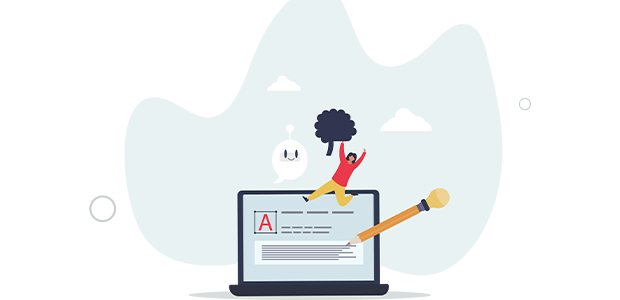
Building personalised learning paths with AI: a 3-step guide for edtech providers
I still remember learning history in school, memorising dates, cramming timelines, trudging through dry textbook passages. It was boring and ineffective. Mostly, I remember not understanding why any of it mattered.
But imagine a Marvel fan exploring major wars, revolutions, or empires through superhero origin stories, or someone who loves The Simpsons learning about different historical eras through the show's parodies and cultural references?
There’s a lot of talk about AI in education right now. Everyone wants to add it to their learning path, like everyone wanted an app 10 years ago.
That's understandable, because the potential is huge. But if you’re working in edtech and not sure what practical use cases you can implement today, you’re not alone.
We’ve been there too. With limited resources and a small team, we began by asking a simple question: What could we build with AI that would genuinely help our learners right now?
With no major system overhauls, we've developed a simple 3-step framework that easily fits AI into the learning journey.
1. Understand the learners on a deeper level
Before AI can personalise anything for each student, it needs data for that personalisation. Your task is to collect it.
We have a simple 30-question survey for each student to fill in before starting the programme. It's divided into three parts:
- 10 questions on personality or psychotype
- 10 questions on cognitive preferences (how someone processes and retains info)
- 10 questions on background and cultural context
The last part can include pop culture, and this is how we can get to know if the learner might be happy to see Simpsons or Marvel analogies in their programme.
The goal is to reference what’s familiar. It creates a bridge between the learners' world and your educational content.
2. Use AI tools to adapt the format and the pace
To personalise learning, take students’ survey records as your foundation. Use it to build content that feels natural and exciting to them.
A Marvel fan who prefers visuals won’t respond well to a long article. Give them a short video where Iron Man explains the topic. Someone who likes structure and classic cartoons? Let Lisa Simpson guide them step-by-step.
The survey covers personality, learning style, and culture. Each part shapes the format. A logical thinker needs clear steps. A curious mind wants open challenges. A social learner should teach or discuss. A visual learner needs charts or videos.
Once survey answers are tagged, use AI tools to generate personalised narratives and home assignments.
At first, I would recommend setting up ChatGPT assistants for personalised scripts and program adaptation. Then try personalised content creation with Elevenlabs for voice gens, Heygen for video avatars, Klingai for creative video gen and lip syncs.
Later on, entire workflows can be automated and scaled with tools like Make.com or n8n.
The more advanced level is using AI to adjust learning processes in real time. AI is capable of detecting where someone gets stuck, whether that’s during a quiz, video, or even a chatbot interaction, and adapting.
On the backend, you can set up full analytics pipelines using tools like Google Data Studio and Zapier to track customer behaviour across dashboards. Platforms like make.com or n8n let you build AI agents that notify you of meaningful shifts in student behaviour or generate custom reports that highlight areas needing attention.
If a learner drops off midway through a concept, the system doesn’t just move on. It pauses, reframes, offers a new example, tries a different voice, maybe even pulls in a relatable story based on their earlier answers.
3. Involve AI in student support, breaking complex tasks into small ones
A big part of learning is about what comes next: updating a CV, applying for jobs, and prepping for interviews. That’s where many learners get stuck and need help.
AI can't perform a complex task like employing someone, so break big goals into smaller steps and think of how AI can become part of the process.
We’ve built customised GPT assistants that help our students with these tasks. They:
- Rewrite CVs based on each job description
- Draft tailored cover letters
- Auto-fill applications (while still keeping human oversight)
- Prepare students for common and tricky interview questions
- Suggest networking opportunities and draft outreach messages
- Analyse job market trends and recommend suitable roles.
That's a simple way to offer some additional value to students. The more complex solutions might include agentic systems that simulate a work environment and offer an immersive experience for training, AI-powered support chatbots, or voice/video avatars for live tuition.
Now, AI makes lessons fun and relevant. It doesn’t magically fix all things, but gives us tools to bridge what students care about and what they need to learn.
Whether Iron Man is explaining ancient Rome or Lisa Simpson is breaking down economic theory, AI helps education speak the learner’s language and make lessons hard to forget.
For more startup news, check out the other articles on the website, and subscribe to the magazine for free. Listen to The Cereal Entrepreneur podcast for more interviews with entrepreneurs and big-hitters in the startup ecosystem.

